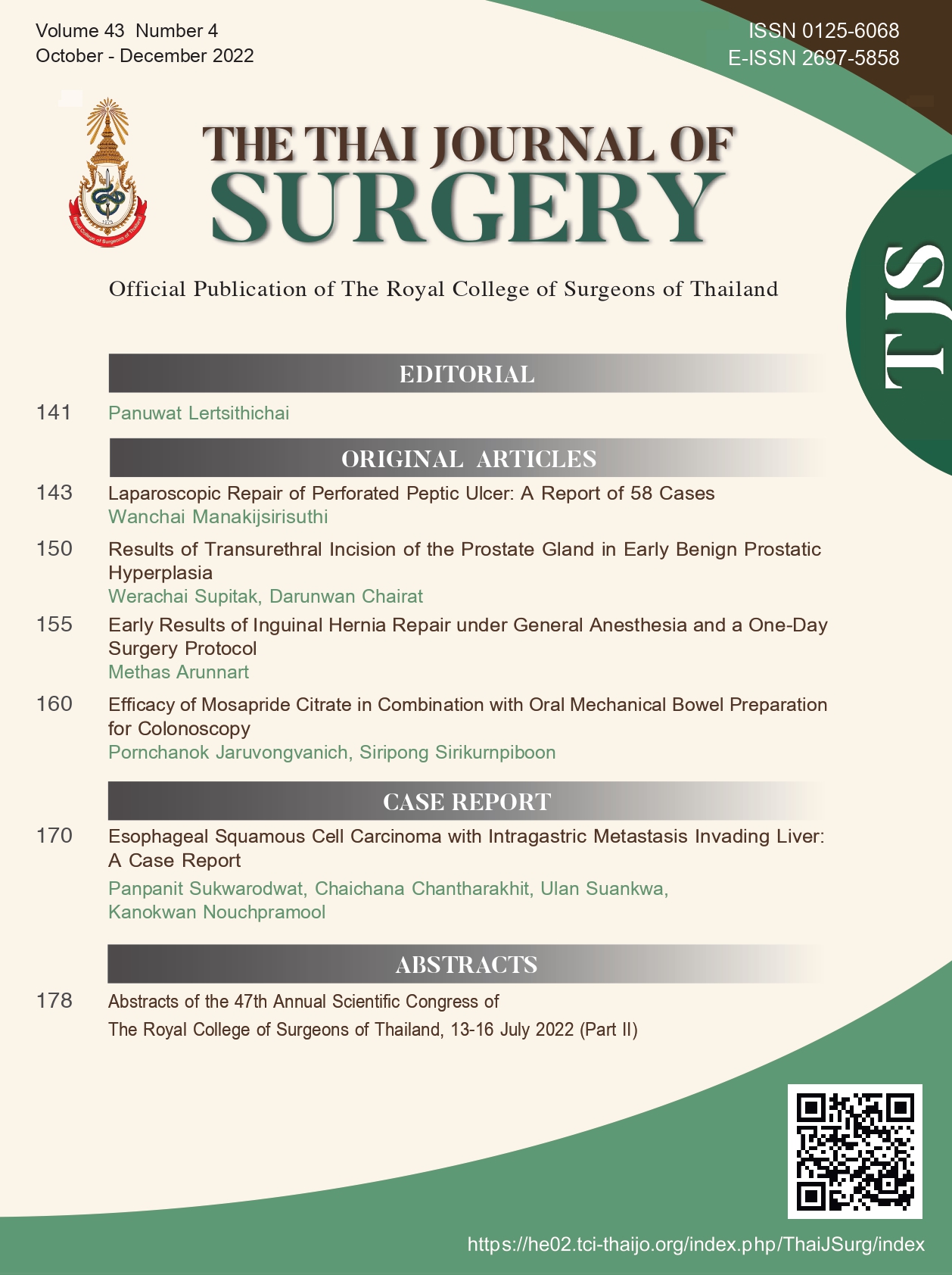Results of Transurethral Incision of the Prostate Gland in Early Benign Prostatic Hyperplasia
Keywords:
BPH, TUIP, IPSS, Q-max, QoLAbstract
Objective: The purpose of the present study is to report the results of treatment for symptomatic patients with early benign prostate hyperplasia (BPH) using transurethral incision of the prostate gland (TUIP), who had previously received medical treatment.
Methods: Patients with ages from 50 to 70 years who had early BPH with lower urinary tract symptoms (LUTS) and had received alpha 1 blocker and, or 5-alpha-reductase inhibitor during the years 2018 to 2020 were included in the study. After receiving information regarding surgical treatment (TUIP) instead of using only medications, 30 patients were willing to change from receiving medications to submitting to surgical treatment. The results of treatment before and after surgery were compared. Collected data included measurements of lower urinary tract symptoms using International Prostatic Symptoms Score (IPSS), the maximum flow rate of the urine (Q-max) and the quality of life (QoL) scores.
Results: There were 28 patients in the study. The mean IPSS scores obtained 3 months, 6 months, and 12 months after surgery were significantly lower than those before the surgery with p-values < 0.001 for all comparisons. The mean Q-max values obtained 3 months, 6 months, and 12 months after the surgery were significantly higher than those before the surgery. The mean QoL scores obtained 3 months after the surgery were significantly better than those before surgery.
Conclusion: TUIP in the treatment of early BPH with lower urinary tract symptoms in the early stages was associated with good outcomes and should be considered as an option for these patients.
References
Ibis MA, Cayan S., Tokati Z, et al. Trend in Benign prostatic hyperplasia surgery over the years. J Urol 2021; 47:501-8.
Oestering JE. Medical and minimal invasive treatment options. New Engl J Med 1995;332:99-109.
Orandi A. Transurethral incision of the prostate. J Urol 1973;110:229-31.
Oelke M, Bachmann A, Decazeaud A, et al. EAU guidelines on the treatment and follow-up of non-neurogenic male lower urinary tract symptoms including benign prostatic obstruction. Eur Urol 2013;64:118-40.
McVary KT, Roehrborn CG, Avins AL, et al. Update on AUA guideline on the management of benign prostate hyperplasia. J Urol 2011;185:1793 – 803.
Nickel JC, Mendez-Probst CE, Whelan TF, et al. 2010 Update: Guidelines for the management of benign prostatic hyperplasia. Can Urol Assoc J 2010;4:310-6.
Lee KH, Kuo HC. Recover of voiding efficacy and bladder function in male patient with Non-neurogenic detrusor underactivity after transurethral bladder outlet surgery. Urology 2019;123:235-41.
Ory J, Nakkeeran S, Rainor Q, et al, Persistent use of medical therapy after surgery for LUTS. World J urol 2022; 40:169-75.
Lourenco T, Shaw M, Fraser C, et al. The clinical effectiveness of transurethral incision of the prostate: A systematic review of randomized controlled trials. World J Urol 2010;28:23-32.
Orandi A. Transurethral incision of prostate compared with transurethral resection of prostate in 132 matching case J Urol 1987;138: 810-5.
Helo S, Wellive RC, McVary KT. Minimally invasive and endoscopic management of benign prostatic hyperplasia. Campbell-Walsh-Wein Urology. 12th ed. Vol III;146: 3434-5.
Keitzer WA, Cervantes L, Demaculangan-Cruz B. Transurethral incision of bladder neck for contracture. J Urol 1961; 86:242-6.
Kletcher BA, Oesterling JE. Transurethal incision of the prostate gland: a viable alternative to transurethral resection. Semin Urol 1992;10: 265-72.
Christensen MM, Aagaard J. Madsen PO. Transurethral resection versus transurethral incision of the prostate: a prospective randomized study. Urol Clin North Am1990; 17:621-30.
Dorflinger TM, Larsen JF, Gasser TC, et al.Transurethral prostatectomy or incision of the prostate in the treatment of prostatism caused by small benign prostates. Scand J Urol Nephrol Suppl1987;104:77-81.
Larsen EH, Dorflinger T, Gasser TC, et al. Transurethral incision versus transurethral resection of the prostate for the treatment of benign prostatic hyperplasia: a preliminary report. Scand J Urol-Nephrol Supp1987;104:83-6.
Hellstrom P, Lukkarinen O, Kontturi M. Bladder neck incision or transurethral electroresection for the treatement of urinary obstruction cause by s small benign prostate? Scand J Urol Nephrol1986;20:187-92.
Downloads
Published
How to Cite
Issue
Section
License
Copyright (c) 2022 The Royal College of Surgeons of Thailand

This work is licensed under a Creative Commons Attribution-NonCommercial-NoDerivatives 4.0 International License.
Articles must be contributed solely to The Thai Journal of Surgery and when published become the property of the Royal College of Surgeons of Thailand. The Royal College of Surgeons of Thailand reserves copyright on all published materials and such materials may not be reproduced in any form without the written permission.



